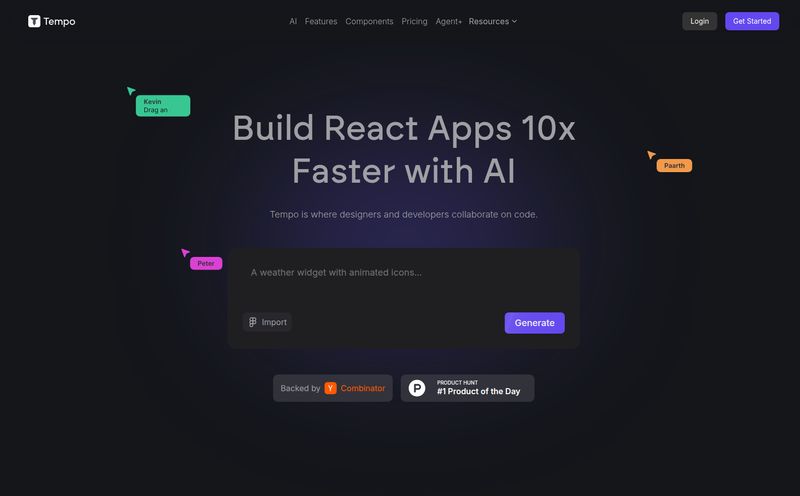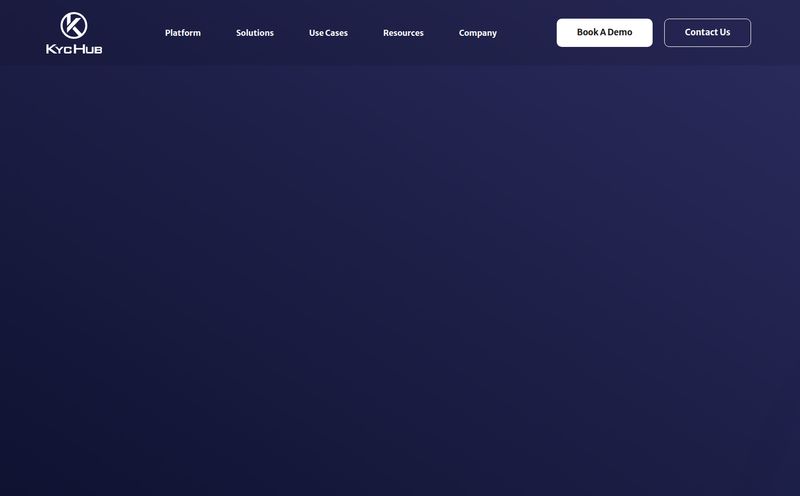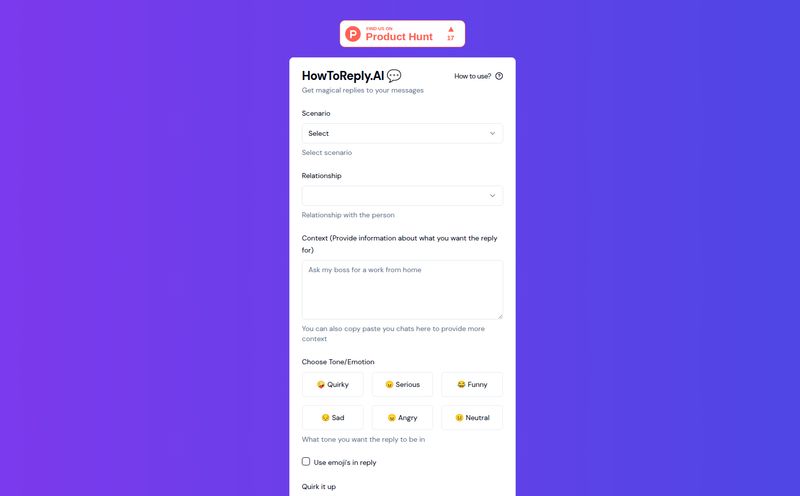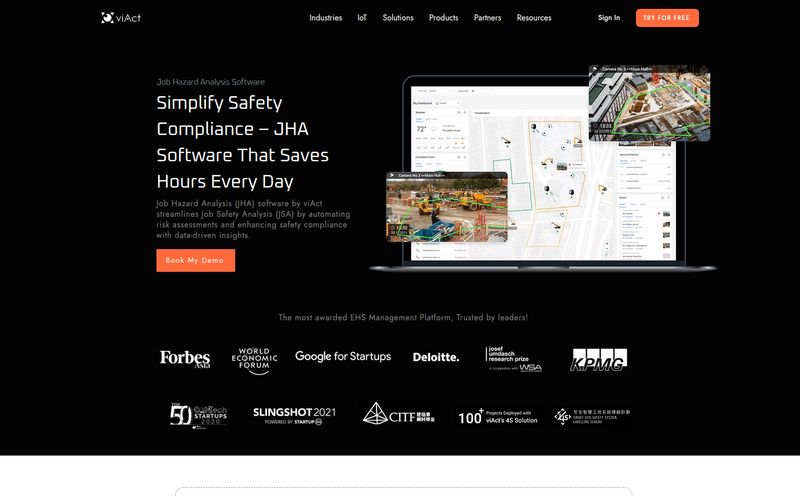The world of AI implementation feels a bit like the Wild West right now, doesn't it? Every company is scrambling to slap "AI-powered" onto their products, but behind the scenes, it’s often pure chaos. Project managers are pulling their hair out, developers are lost in a sea of technical uncertainty, and the business folks are just hoping something, anything, sticks to the wall and generates revenue.
I’ve seen it happen more times than I can count. A project kicks off with massive excitement, only to fizzle out because nobody had a real plan. It's a classic case of having a powerful engine but no steering wheel, no map, no clue where you're going. So when I stumbled upon something called The Double A Framework from a Swedish team called AI thinking, my curiosity was definitely piqued.
Is this just another bit of consulting jargon, or is there something genuinely useful here for those of us in the trenches?
So, What Exactly is This "Double A Framework"?
At its heart, the Double A Framework is a structured process designed to stop you from flying blind. Think of it less like a rigid set of rules and more like a recipe for a really complex, fancy meal. You wouldn't just start throwing expensive ingredients into a pot, right? You’d follow a recipe, step-by-step, to make sure you end up with something delicious instead of an inedible mess.
That's what this framework aims to be for AI projects. It's a map through the jungle. The creators, a team of designers based in Sweden, didn't just invent this in a vacuum. They did something pretty clever: they blended three powerful methodologies into one cohesive approach.
The Holy Trinity: AI, Agile, and Design Thinking
This is the part that really got my attention. It’s not just an “AI process.” It’s a mashup of proven concepts, and that’s where the magic often lies. The name "Double A" itself hints at two of its pillars: AI and Agile.
The Agile Angle
If you've been in tech for more than five minutes, you've heard of Agile. Its all about working in short cycles, building a small piece, testing it, learning from it, and then building the next piece. For AI, this is critical. AI projects are notoriously unpredictable. By using an Agile approach, you avoid betting the entire farm on a single, massive launch that might completely miss the mark. You get to course-correct along the way. Smart.
The Design Thinking Touch
Here’s where so many tech projects, especially AI ones, fall flat. They build incredibly powerful tech that nobody actually wants or needs. Design Thinking forces you to put the human being first. It asks: Who are we building this for? What problem are we actually solving? By weaving this in, the Double A Framework ensures the final product isn’t just technically impressive but also genuinely relevant and valuable. A concept we can all get behind.
The AI Core
And of course, it's all built specifically for the unique challenges of AI. It acknowledges the technical uncertainties, the data dependencies, and the sometimes-funky, unpredictable nature of machine learning models. It’s not just a generic project management template with "AI" written on it.
What's Actually in the Box? A Look Inside the Playbook
Okay, so it sounds good in theory. But what do you actually get? According to their site, signing up for access gives you a bundle of three key things. I've always felt that how a company packages its knowledge tells you a lot about them.
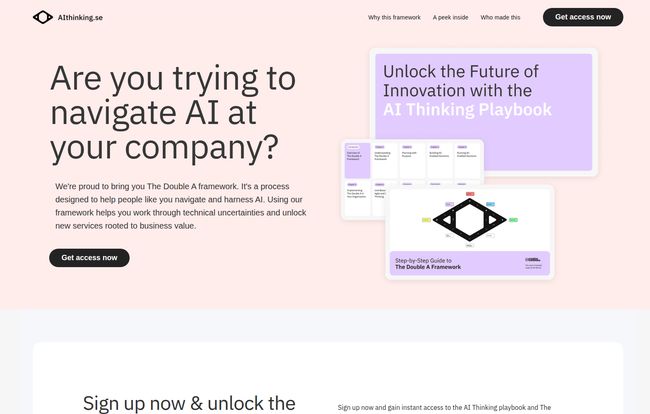
Visit The Double A framework
- The Playbook: This is your high-level overview. The "why" behind the methodology. It explains the mindset, the core ideas, and the overall process. It's the philosophy document that gets everyone on the same page.
- The Guide: This is the nitty-gritty. The step-by-step instructions, complete with examples, tools, materials, and pro tips. This is the tactical manual you'll be using day-to-day to actually run the project. Frankly, this is where the real value is.
- A 15-min Zoom Call: I love this. It shows they're not just throwing a PDF over the wall and wishing you luck. They're offering a direct line to an expert to help you understand how the framework can be adapted to your specific needs. It's a consultative touch that adds a ton of credibility.
Who Should Be Giving This a Shot?
The site says it's for teams or individuals designing new products, or for companies that want to get into AI but don't know where to start. I'd agree, but I’d also expand on that. In my experience, a framework like this is perfect for the frustrated project manager who has been tasked with an "AI initiative" and given zero structure. It’s for the startup that needs to be scrappy but also smart, avoiding costly rework.
It’s not just for massive enterprises with huge data science teams. A smaller team, or even a solo consultant, could use this to bring a much-needed process and professionalism to their AI work. It’s about instilling a way of thinking, not just managing a giant team.
The Good, The Bad, and The Realistic
No tool or framework is a silver bullet. Let’s look at this with clear eyes. Based on the information and my own industry experience, here's my take.
The Upside
This framework brings much-needed structure to the beautiful chaos of AI development. It simplifies complexity and gives you a clear path forward. Combining AI with Agile and Design Thinking is, in my opinion, the absolute right way to approach it. It grounds the project in reality—both in terms of iterative progress and human needs.
The Reality Check
This isn't magic. You can't just download the playbook and expect a perfect AI product a week later. There's a learning curve. The framework's effectiveness will depend entirely on your team's expertise and their willingness to actually follow the process. You'll likely need to adapt it a bit to fit your company's specific quirks and project needs. Remember, it's a framework, not a straitjacket.
And The Price Is...?
Here's the interesting part. You'll notice the website doesn't list a price. The call to action is "Get access now," which likely leads to a signup or a contact form. And I think thats a good thing.
This tells me it’s not a generic, one-size-fits-all $49 ebook. It signals a more consultative approach. They probably want to talk to you (hence the 15-minute call), understand your needs, and make sure you're a good fit. For a B2B solution like this, that makes perfect sense. They're selling a process, a partnership, not just a document.
My Final Take: Is the Double A Framework Worth Your Time?
So, what’s the verdict? From everything I've seen, I'm optimistic. If you or your team are struggling with AI projects that go nowhere, feel aimless, or fail to deliver real business value, then exploring this framework seems like a no-brainer.
The biggest selling point for me remains that thoughtful blend of AI, Agile, and Design Thinking. It takes the abstract, often intimidating concept of artificial intelligence and anchors it to two of the most practical, proven, and human-centric methodologies in the modern tech world. It’s a recipe for building AI that actually works, and more importantly, AI that actually matters.
Frequently Asked Questions
- What is the Double A Framework?
- The Double A Framework is a structured process from AI thinking that blends AI development with Agile and Design Thinking methodologies. It's designed to help companies navigate AI projects, reduce uncertainty, and create valuable, human-centered AI products and services.
- Is the Double A Framework free?
- The website doesn't specify a price. Access is granted through a sign-up, which includes a playbook, a step-by-step guide, and a 15-minute consultation call. This suggests a consultative or lead-generation model rather than a fixed price.
- Who created the Double A Framework?
- It was created by AI thinking, a team of designers with a digital focus based in Sweden.
- What makes this framework different from other AI project management methods?
- Its key differentiator is the conscious integration of three disciplines: the technical aspects of AI, the iterative and flexible nature of Agile, and the user-focused problem-solving of Design Thinking. Many methods focus only on the technical or project management side, but this one creates a more holistic approach.
- Do I need to be a technical expert to use this?
- Not necessarily. While technical expertise is needed for the actual AI development, the framework itself is designed for teams, including project managers, designers, and business leaders. It provides a common language and process for everyone involved, regardless of their technical depth.
- How does Agile fit into this AI framework?
- Agile provides the iterative structure. Instead of trying to build a complex AI system all at once, the framework uses Agile principles to break the project into smaller, manageable cycles. This allows teams to build, test, learn, and adapt quickly, which is essential for unpredictable AI projects.
Conclusion
In a world buzzing with AI hype, having a clear, actionable plan is more valuable than ever. Throwing technology at a problem without a process is just a recipe for expensive failure. The Double A Framework appears to be a thoughtful, well-structured compass for any organization trying to find its way through the AI jungle. It’s a reminder that the most successful innovations aren't just about powerful technology, but about smart processes and a deep understanding of the people you're building for.
Reference and Sources
- AI thinking Official Website - The creators of the Double A Framework.
- What is Agile? - A comprehensive guide from Atlassian.
- What is Design Thinking? - An explainer from the Nielsen Norman Group.
